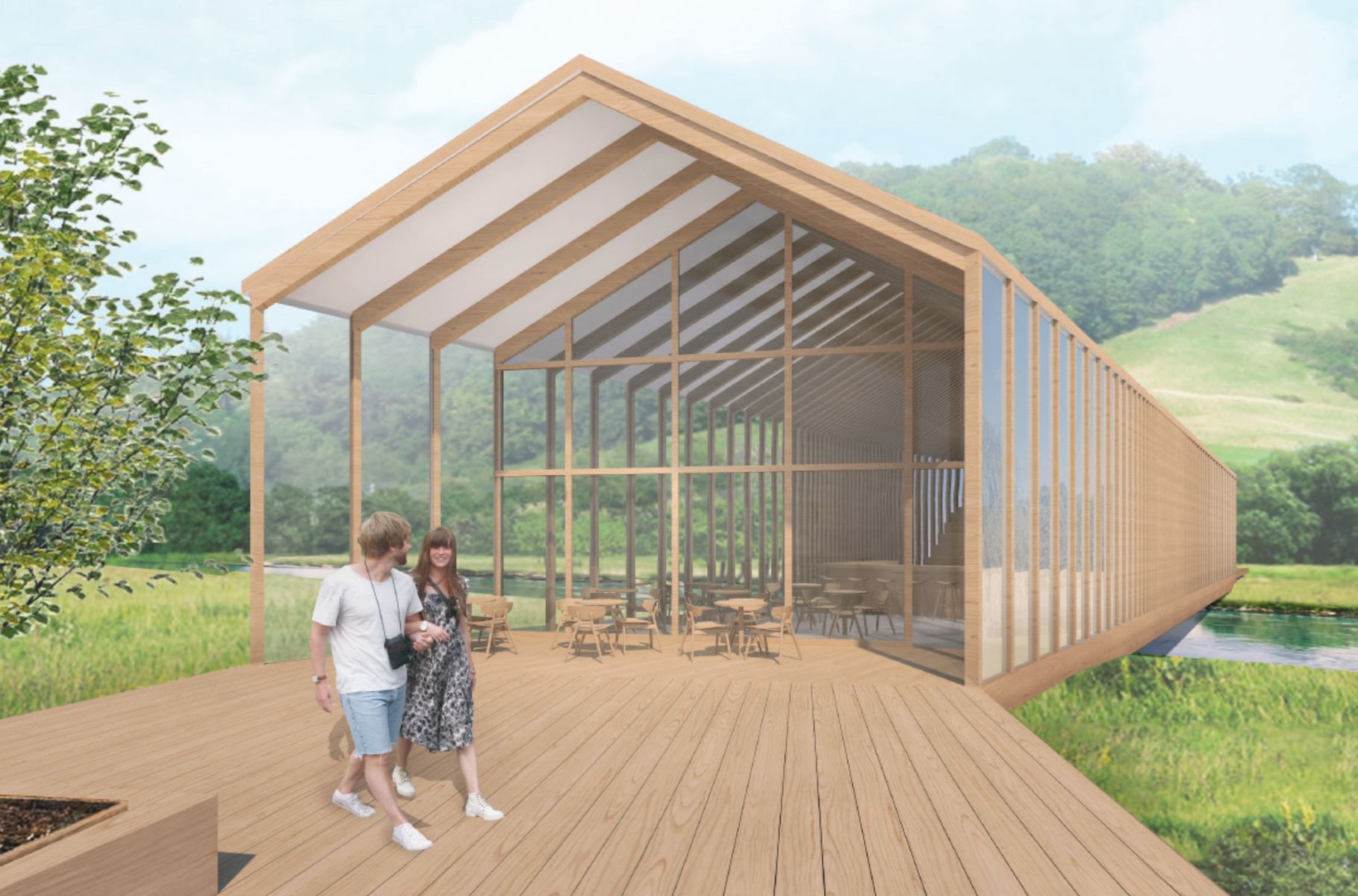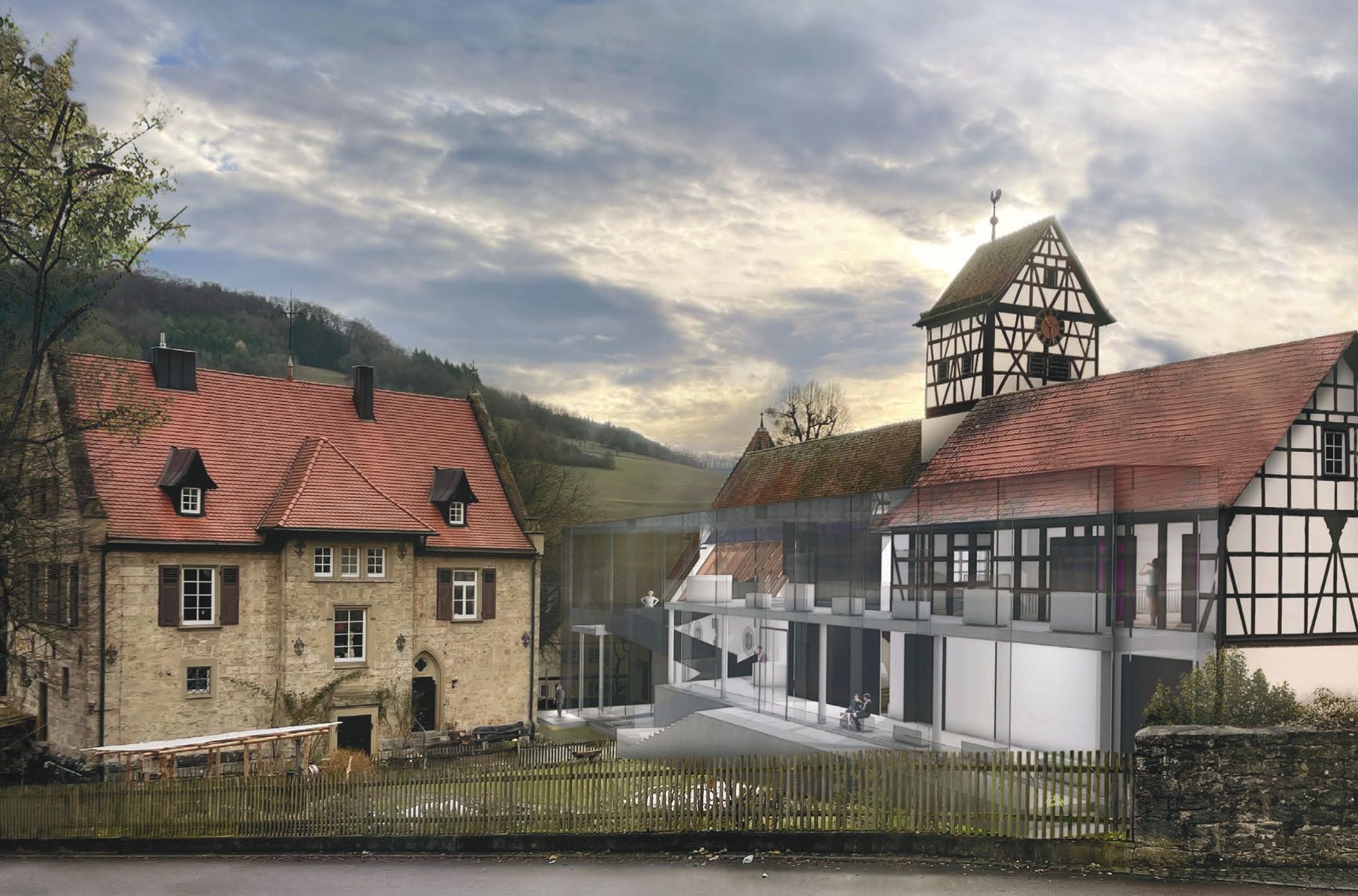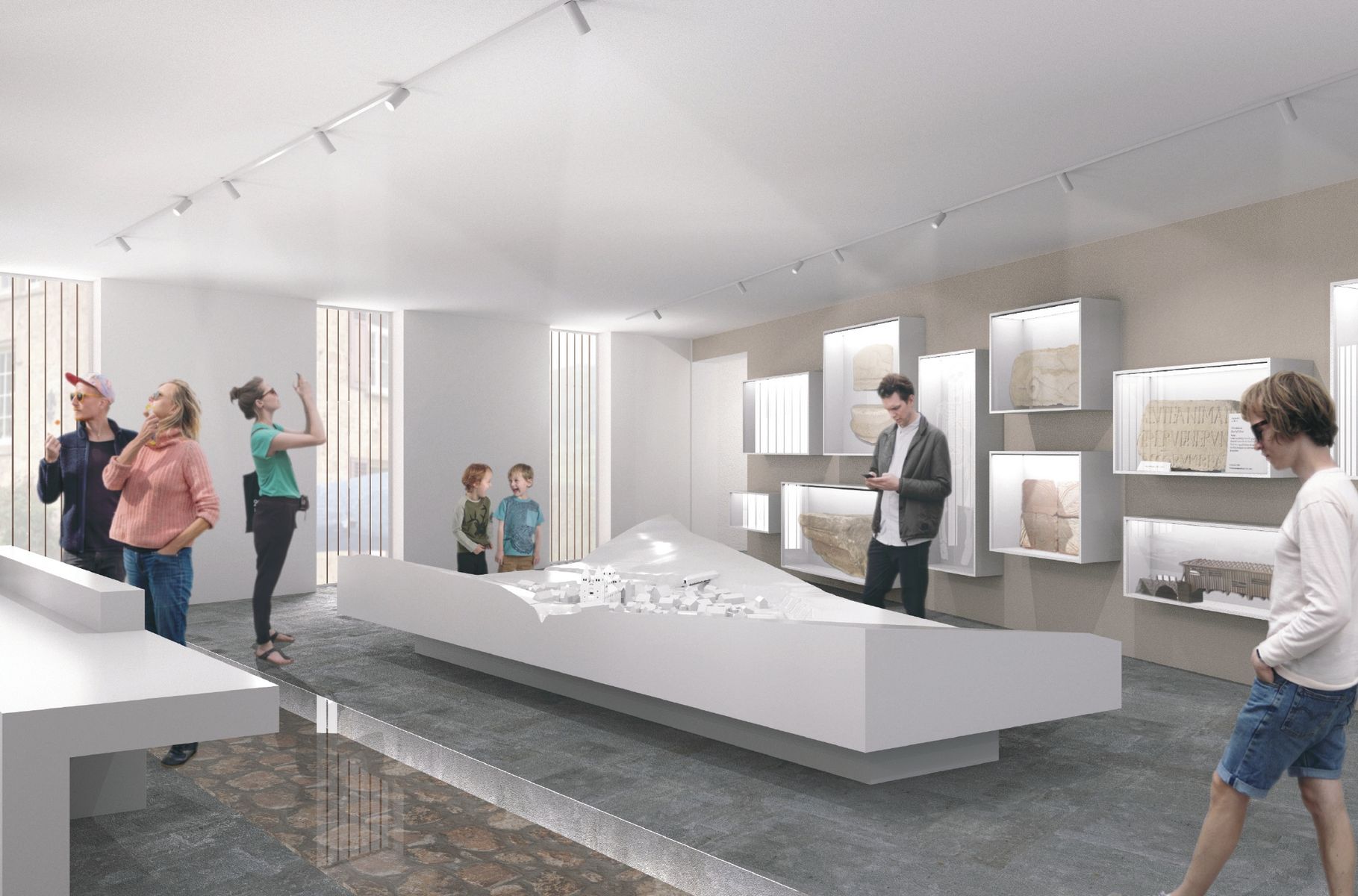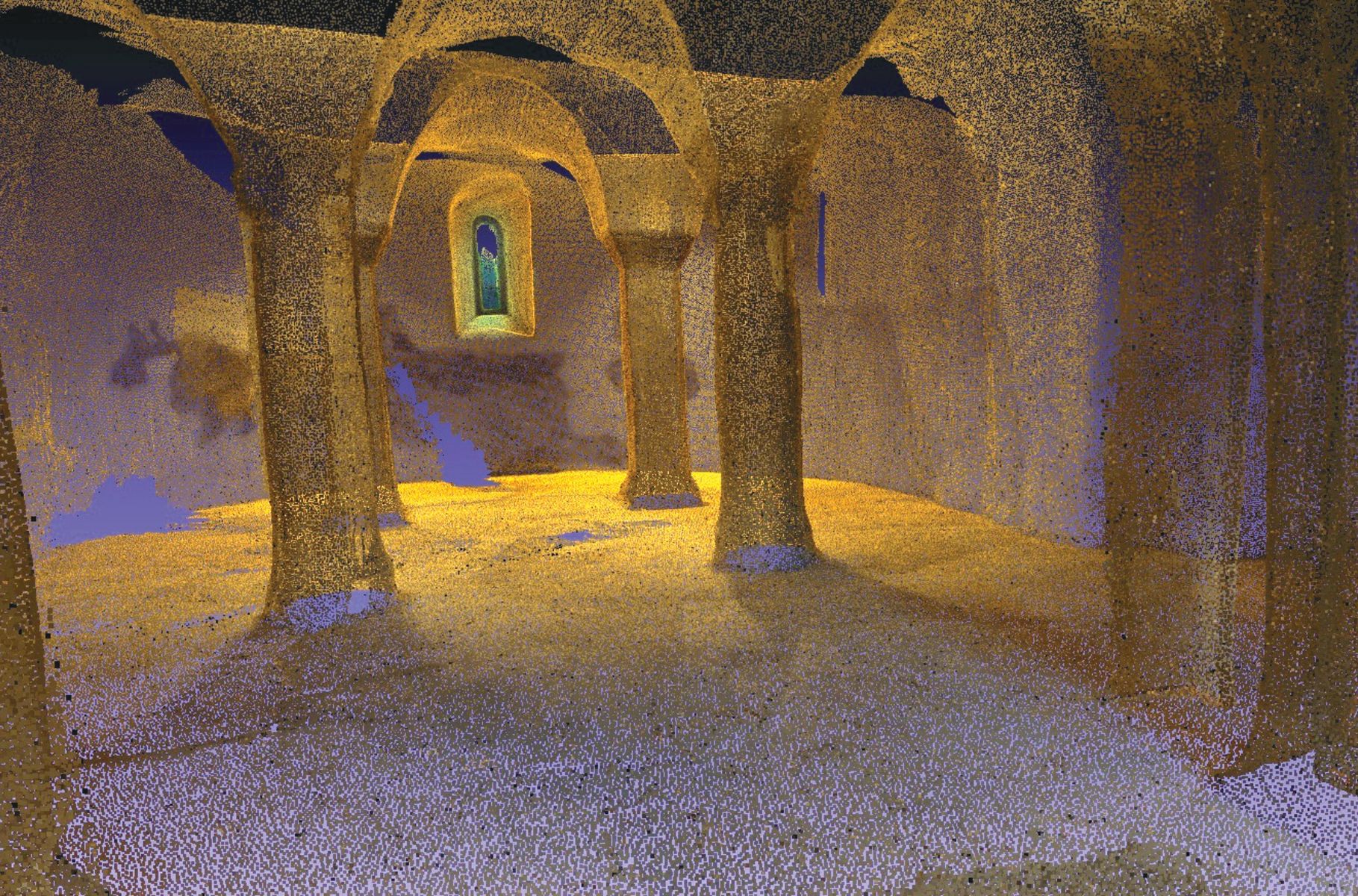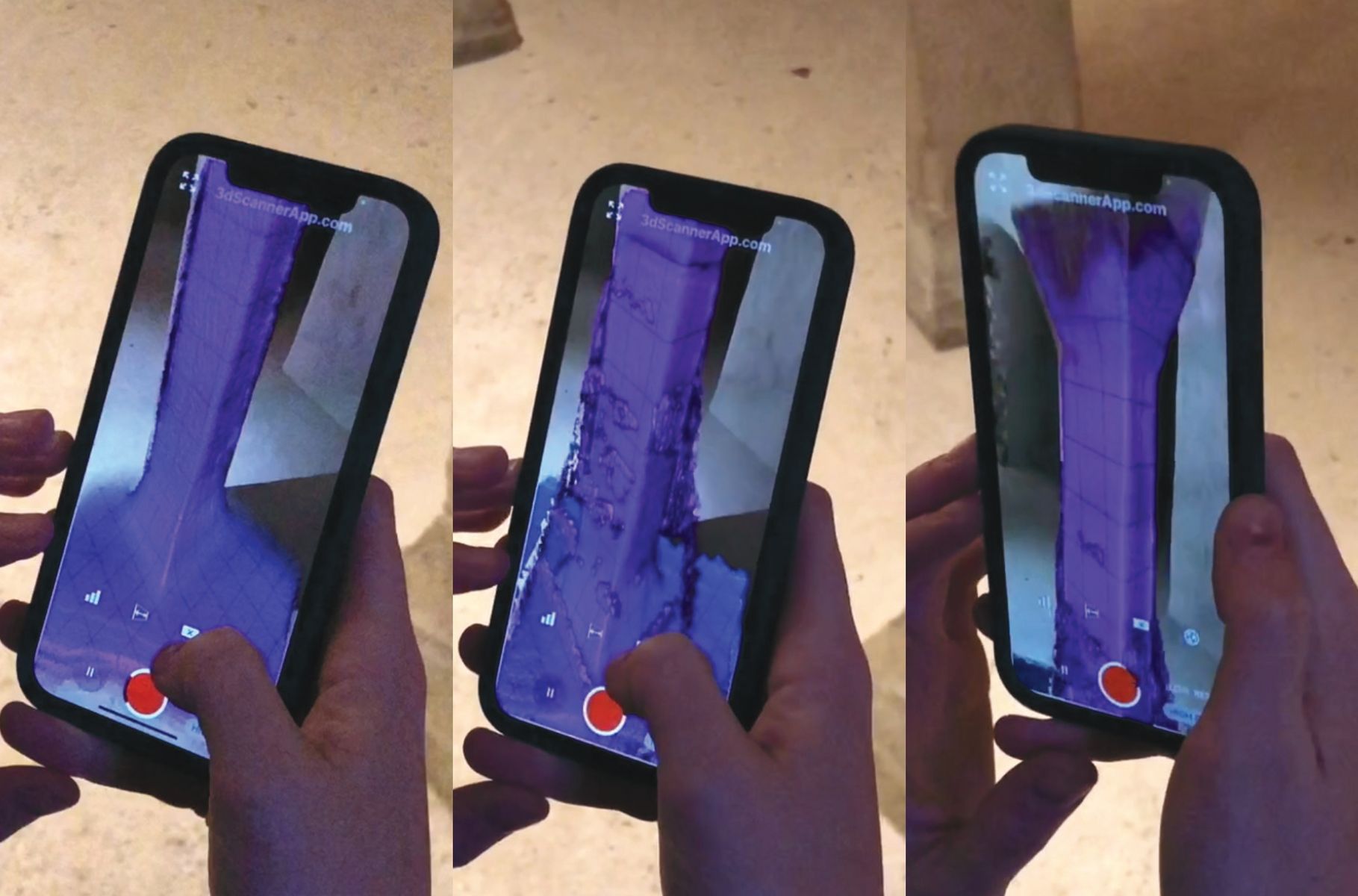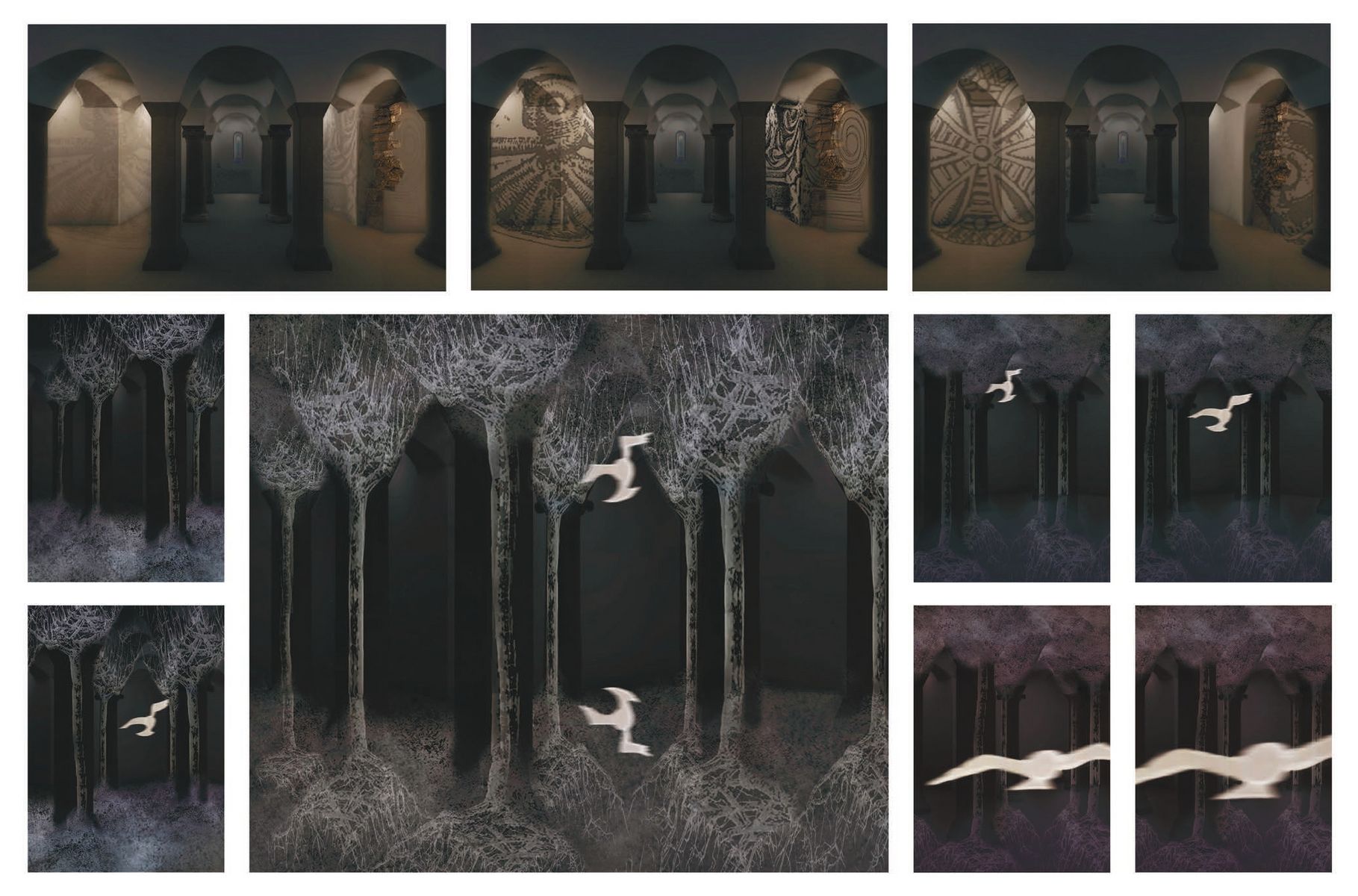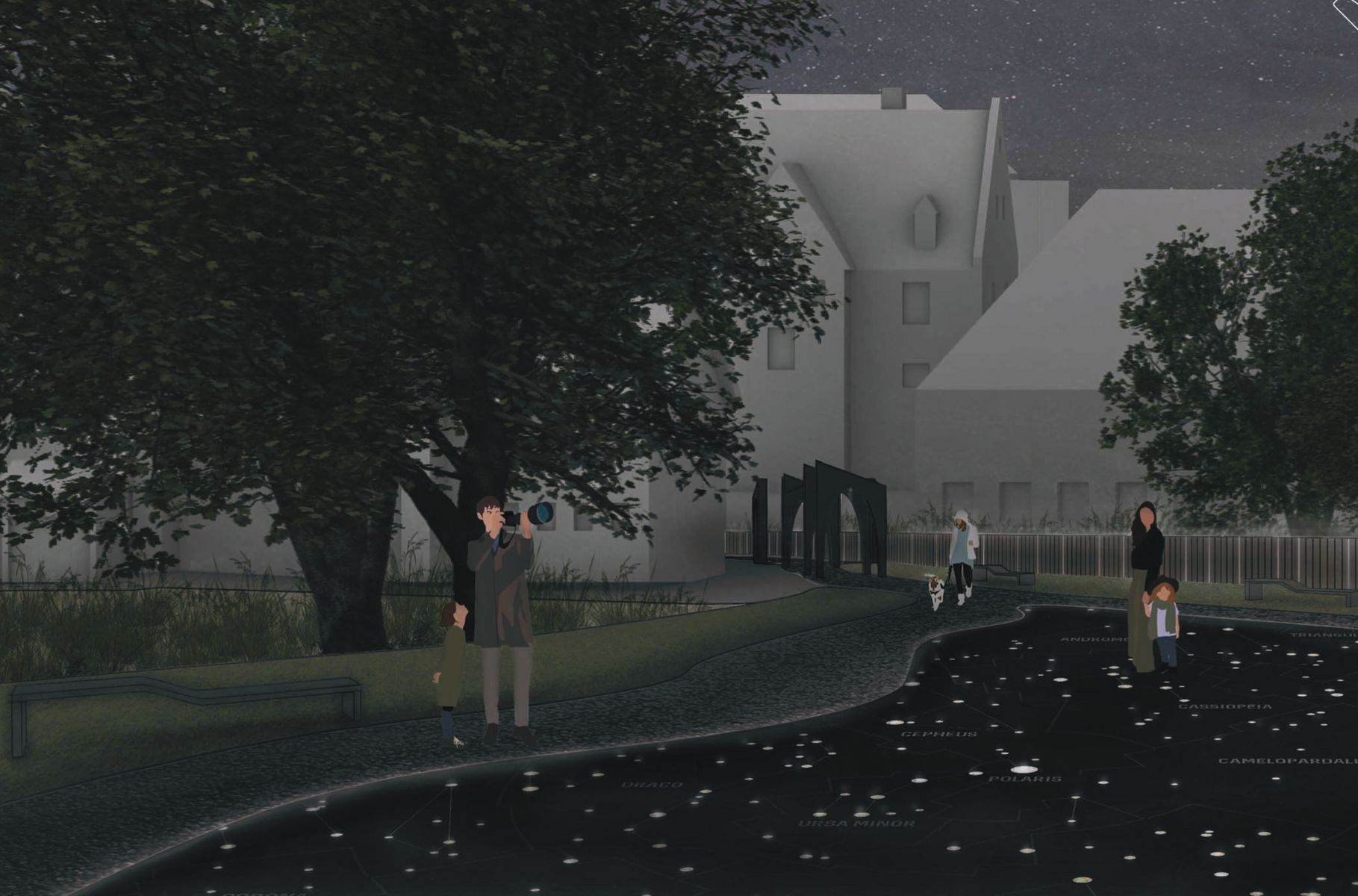Digitalizing a Puzzling Village
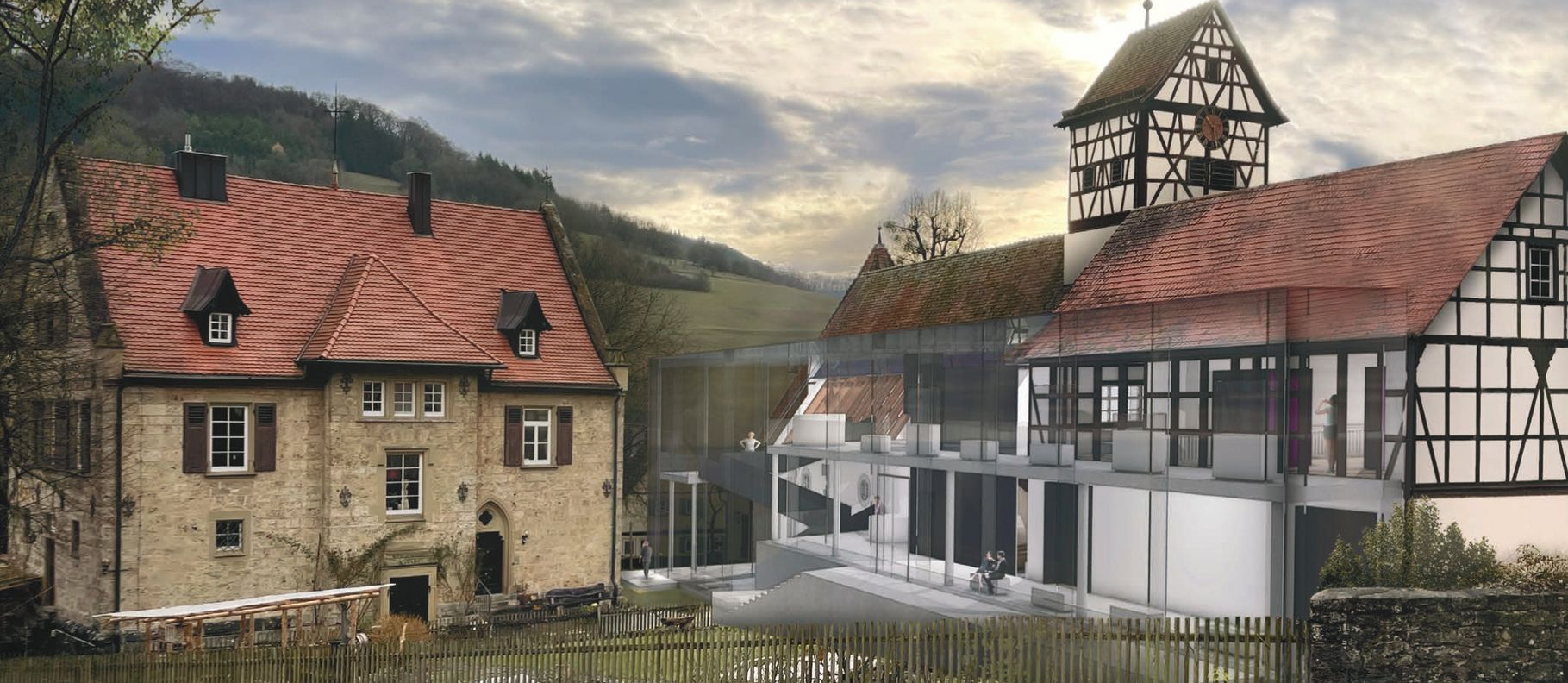
As part of a masters project headed by Professor Lars Uwe Bleher and lecturer Katharina Körber from the architecture faculty at the Darmstadt University of Applied Sciences (h_da), a small 57-inhabitant hamlet will become a test site for architecture students. Ideas and outlines were developed designed to renew the former splendour and relate the story of this small yet important location in Baden-Württemberg, with its fascinating theological history. A foundation is to assist in realizing the overall vision for visitors’ centres, museum buildings, guided archaeological pathways or a digital reproduction of a basilica, to develop this remote little gem into a tourist destination.
By Alexandra Welsch, 5.3.2021
Birds chirrup away, cows graze, the waters murmur as the camera surfaces from the river Jagst and hovers above the sleepy hamlet. As in a time-lapse film, the computer animation depicts the meadow landscape with its scattered settler dwellings then the first aisle-less church built in the 8th and 9th centuries appears. Later on this is replaced by a multi-aisled church. Then, during the 10th and 11th centuries, a mighty basilica in early Romantic style is built alongside. This really is an impressive structure, at 47 metres long and 17 metres wide, it towers over the few surrounding houses, all within the roughly 8-minute animated film created as part of a master project at the h_da. Yet in reality, one really needs eyes to be peeled in order to grasp what it is that makes the sleepy, 57-inhabitant hamlet, Unterregenbach, so significant. At the moment it is still difficult to imagine that here, during the early middle ages, a religious centre was established – and that one of the most important research institutes for archaeology during the middle ages is located in Baden-Württemberg.
As Körber points out “our attitude now, working in architecture, is that things are no longer digital and analogue but rather that these fuse together into something a hybrid formation”. Nonetheless, such a sleepy hamlet as Unterregenbach can pose specific challenges: the 3D visualization of the village’s structure was based on images taken from a drone camera. Yet the drone needed to be operated via Wi-Fi, a modern attribute that has yet to become properly established and available in Unterregenbach. “Up until this was generally feasible you had to stand at a particular spot in the village and hold your smartphone up high.” The digital material collected could then only be sent from the gym in neighbouring Langenburg where there was a hotspot “it’s like a meeting of two worlds.”
The clock in the church tower chimes away as Hans-Jörg Wilhelm answers the phone. He’s been living in Unterregenbach for 25 years and runs the excavation museum on a voluntary basis. He’s pleased that the team has introduced a fresh dynamism. “We’ve had so many people come here to study and examine things” he says, “but it all seemed to more or less stagnate since the 80s and 90s.” He sounds particularly regretful about an exciting discovery that he terms ‘the giants from Jagst Valley’: during excavations carried out in the sixties under the current 13th century church, skeletons were found in an inner chamber which were extraordinarily tall – the bodies measure between 1.80 and 1.90 metres, and thus 20 to 30 centimetres taller than the average height of their period. After the bones had lain in storage for decades, they had since been subjected to DNA analysis, by the same Bozen institute that had participated in the analysis of Ötzi the Austrian iceman. “I haven’t received anything in writing yet”, says the hobby historian, who enjoys wearing a similar hat to screen archaeologist Indiana Jones. Yet he has been told that the oldest skeleton is from the year 650 “it’s a minor sensation.”
The state office for the preservation of historical monuments, which is involved in the matter, has yet to divulge any concrete conclusions. Yet as the press office of the regional council in Stuttgart, as the higher-ranking authority, puts it, the location’s significance “as a unique ensemble of churches and burial grounds, together with a manor house and settlement stemming from the early to late middle ages” plus one of the most important research focal points for middle age archaeology since 1960, extending far beyond the state of Baden-Württemberg. Excavations carried out between 1960 and 1968 represented “one of the most important pillars for the formation of modern archaeology of the middle ages to modern times as an independent specialist field in Germany.”
So why did the research ground to a halt over decades, only now to be revitalized? In the council’s view “Huge progress has been made in the possibilities presented by DNA analysis of historic and prehistoric bones over the past decade.” The dating methods offered by natural scientists using C14 had also become more accurate. “Meaning many questions, for instance regarding degree of kinship, are only able to be answered now.” Furthermore, the setting up of the foundation means synergy effects can be expected. The investigations began again in earnest in 2019, “in order to find answers to questions which remain with the help of modern archaeological and natural scientific methods.” These include current examinations to determine the age and degree of kinship of the four internal burials beneath the original foundations of the current parish church. Furthermore, last year investigations began into two open spaces in the village for the first time, for these were probably the sites of former settlements or market places.
Philip Neuber, who runs the foundation his father initiated, feels certain that “our activities have provided an impetus for things to happen here once more.” For instance, they are offering a scholarship to evaluate the materials that have been unearthed to date in and around Unterregenbach and are held by the state office for the preservation of historical monuments. However, the larger exhibition schemes, such as a visitors’ centre or museum, will require additional funding “we’re certain that all the designs and visions will make it easier to organize more funding” says the young foundation head, who is delighted with the students’ ideas. For example, the winning footbridge design by Sarah Krenzer for a visitors’ centre set on a slender wooden bridge spanning the river Jagst “it just makes you feel like going out and building it.”
Yet it is also clear that any developments must be tempered by caution “the inhabitants are proud of what lies dormant there, and they want it to become known beyond the local area,” says the qualified attorney, “yet on the other hand, many are worried the hamlet will lose its charm.” One thing he makes quite clear “it will not be turned into a Disneyland!” Rather, the plan is to attract tourists in a “sustainable and considered way.” One concrete project they aim to complete this year is the establishment of the archaeological pathway that will guide walkers between info points through the hamlet. As Katharina Körber, speaking for the project partner at the h_da, points out – the University will be glad to remain on board: “we’re certainly very interested in carrying on our role.”
Supervision:
Prof. Lars Uwe Bleher, LB Katharina Körber – subject field New Media
Historical Building consultation: Prof. Udo Gleim
Participants:
Lale Akman, Lara Blume, Sarah Fritzinger, Michèle Geiger, Anna Göttmann, Anika Grevener, Lena Kester, Sarah Krenzer, Andrea Lang, Dingxiang Lin, Thomas Obmann, Mandy Schultz, Mara Teodoro, Laura Wenz, Xian Zhu
Technology and tools utilised:
Digitalization of the crypt: 3D Lidar Scan, modelling of Unterregenbach: Rhinoceros & VRay, various other CAAD programmes, Adobe CC, Premiere and After Effects
Co-Creation with Mattermost as a collaborative working tool
Translation: Paul Comley
Contact details
Christina Janssen
Scientific editor
Tel.: +49.6151.16-30112
E-Mail: christina.janssen@h-da.de

